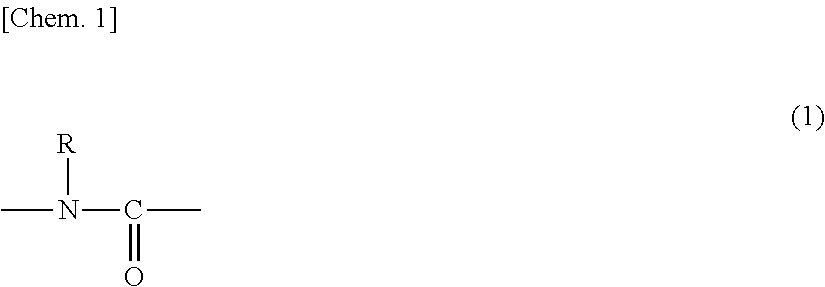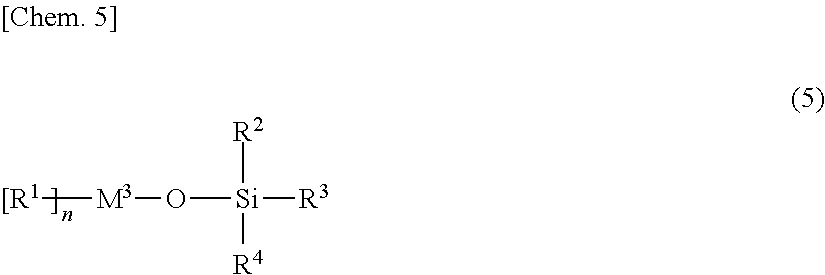Non-aqueous electrolyte for secondary battery and non-aqueous electrolyte secondary battery employing the same
a secondary battery and non-aqueous electrolyte technology, applied in the direction of electrochemical generators, electrical apparatus, cell components, etc., can solve the problems of inhibiting secondary reactions, difficult to satisfy in particular with the above-mentioned isocyanate compounds, etc., and achieve excellent low-temperature discharge characteristics, high lithium ion conductivity, and low charge transfer resistance
- Summary
- Abstract
- Description
- Claims
- Application Information
AI Technical Summary
Benefits of technology
Problems solved by technology
Method used
Image
Examples
example 1
(Fabrication of Positive Electrode)
[0281]90 mass parts of lithium nickel manganese cobaltate (LiNi1 / 3Mn1 / 3Co1 / 3O2) was used as the positive electrode active material and was mixed with 7 mass parts of a carbon black and 3 mass parts of a polyvinylidene fluoride; N-methyl-2-pyrrolidone was added; and a slurry was prepared. This was uniformly coated and dried on both sides of a 15 μm-thick aluminum foil, and the positive electrode was subsequently obtained by pressing to provide a density for the positive electrode active material layer of 2.6 gcm−3.
(Production of Negative Electrode)
[0282]A water-based dispersion of sodium carboxymethyl cellulose (1 mass % concentration of the sodium carboxymethyl cellulose) as a thickener and a water-based dispersion of a styrene-butadiene rubber (50 mass % concentration of the styrene-butadiene rubber) as a binder were added to a graphite that had a Raman R value—defined as the ratio of the peak intensity at 1360 cm−1 to the peak intensity at 1580 c...
example 1-1
[0288]Sufficiently dried LiPF6 was dissolved in a mixture of ethylene carbonate, dimethyl carbonate and ethylmethyl carbonate (volume ratio 3:3:4) in a dry argon atmosphere so as to be 1 mol / L in the overall non-aqueous electrolyte solution (this electrolyte solution is also abbreviated as the “reference electrolyte solution”). The non-aqueous electrolyte solution was prepared by adding 0.5 mass % of DURANATE™ TPA-100 (Asahi Kasei Chemicals Corporation), which has an isocyanurate skeleton, to the reference electrolyte solution.
example 1-2
[0289]An electrolyte solution was prepared as in Example 1-1, but using DURANATE™ 24A-100 (Asahi Kasei Chemicals Corporation), which has a biuret skeleton, in place of the DURANATE™ TPA-100.
PUM
| Property | Measurement | Unit |
|---|---|---|
| mass % | aaaaa | aaaaa |
| volume % | aaaaa | aaaaa |
| flash point | aaaaa | aaaaa |
Abstract
Description
Claims
Application Information
 Login to View More
Login to View More - R&D
- Intellectual Property
- Life Sciences
- Materials
- Tech Scout
- Unparalleled Data Quality
- Higher Quality Content
- 60% Fewer Hallucinations
Browse by: Latest US Patents, China's latest patents, Technical Efficacy Thesaurus, Application Domain, Technology Topic, Popular Technical Reports.
© 2025 PatSnap. All rights reserved.Legal|Privacy policy|Modern Slavery Act Transparency Statement|Sitemap|About US| Contact US: help@patsnap.com



